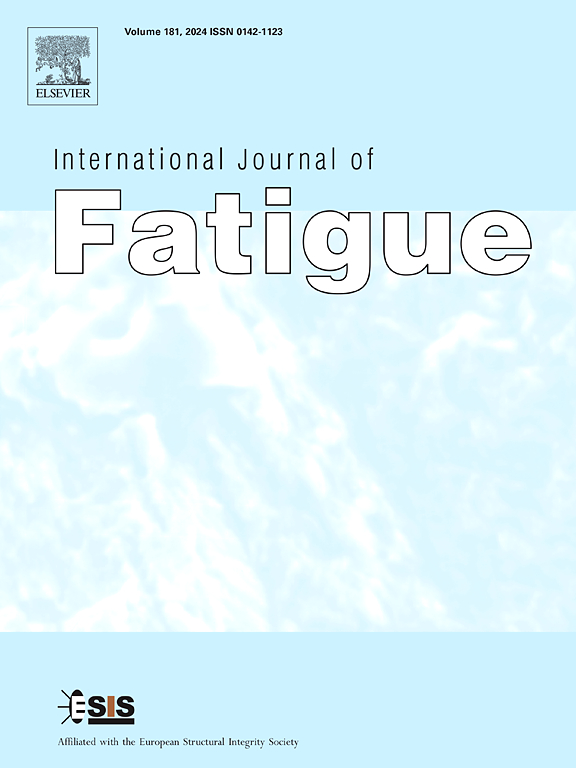添加硼9% Cr马氏体钢的低周疲劳行为:温度、应变速率和应变幅值的影响
IF 5.7
2区 材料科学
Q1 ENGINEERING, MECHANICAL
引用次数: 0
摘要
研究了添加硼的9% Cr马氏体不锈钢COST FB2在300°C、600°C和650°C下的低周疲劳行为。机械应变幅值规定在3×10−3和8×10−3之间,在较高的测试温度下,有四种不同的应变速率,范围从3.3¯×10−5/s到1×10−2/s。在所有研究的加载条件下都观察到循环软化,这是由于位错密度和板条粗化的减少,在更高的应变幅值和温度下变得更加明显。损伤机制研究表明,穿晶裂纹是主要的破坏模式,次生裂纹的频率随应变幅值的增加而增加。在600°C和650°C时,环境辅助开裂和氧化效应变得更加明显,特别是在高应变幅值和低加载频率下。疲劳寿命随温度和应变幅值的升高而降低,随应变速率的降低而降低。为了考虑环境辅助开裂效应,提出了一种频率修正的Manson-Coffin模型。修正后的模型准确地捕获了在较低的机械应变率下寿命的减少。本文章由计算机程序翻译,如有差异,请以英文原文为准。
Low-cycle fatigue behaviour of boron-added 9% Cr martensitic steel: Effects of temperature, strain rate, and strain amplitude
The Low-Cycle Fatigue (LCF) behaviour of a boron-added 9% Cr martensitic stainless steel, COST FB2, was investigated at temperatures of 300 ° C ° C ° C 3 × 1 0 − 3 8 × 1 0 − 3 3 . 3 ¯ × 1 0 − 5 1 × 1 0 − 2 ° C ° C
求助全文
通过发布文献求助,成功后即可免费获取论文全文。
去求助
来源期刊

International Journal of Fatigue
工程技术-材料科学:综合
CiteScore
10.70
自引率
21.70%
发文量
619
审稿时长
58 days
期刊介绍:
Typical subjects discussed in International Journal of Fatigue address:
Novel fatigue testing and characterization methods (new kinds of fatigue tests, critical evaluation of existing methods, in situ measurement of fatigue degradation, non-contact field measurements)
Multiaxial fatigue and complex loading effects of materials and structures, exploring state-of-the-art concepts in degradation under cyclic loading
Fatigue in the very high cycle regime, including failure mode transitions from surface to subsurface, effects of surface treatment, processing, and loading conditions
Modeling (including degradation processes and related driving forces, multiscale/multi-resolution methods, computational hierarchical and concurrent methods for coupled component and material responses, novel methods for notch root analysis, fracture mechanics, damage mechanics, crack growth kinetics, life prediction and durability, and prediction of stochastic fatigue behavior reflecting microstructure and service conditions)
Models for early stages of fatigue crack formation and growth that explicitly consider microstructure and relevant materials science aspects
Understanding the influence or manufacturing and processing route on fatigue degradation, and embedding this understanding in more predictive schemes for mitigation and design against fatigue
Prognosis and damage state awareness (including sensors, monitoring, methodology, interactive control, accelerated methods, data interpretation)
Applications of technologies associated with fatigue and their implications for structural integrity and reliability. This includes issues related to design, operation and maintenance, i.e., life cycle engineering
Smart materials and structures that can sense and mitigate fatigue degradation
Fatigue of devices and structures at small scales, including effects of process route and surfaces/interfaces.
 求助内容:
求助内容: 应助结果提醒方式:
应助结果提醒方式:


